There are 150 VLASS quicklook images in this compilation from the first part of our all-sky radio survey. Quicklook images are the first round of radio data downloaded from the survey that astronomers can use to identify the precise location of radio transients, measure magnetic fields in our galaxy and beyond, and study radio emission from galaxies and active galactic nuclei throughout the Universe, including regions hidden behind obscuring dust.
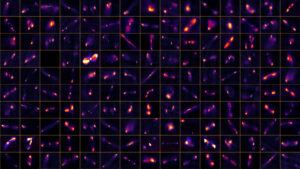
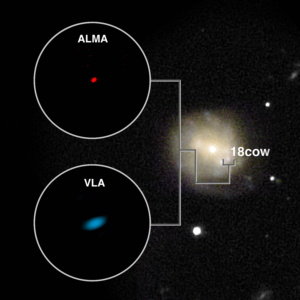
ALMA and VLA Images of AT2018cow
ALMA and VLA images of the mysterious new type of cosmic blast, AT2018cow at left. Visible-light image of outburst in its host galaxy at right. Images not to same scale. Images of the blast itself do not indicate its size, but are the result of its brightness and the characteristics of the telescopes.
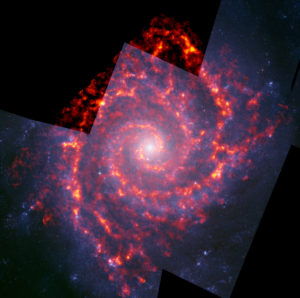
NGC 628, PHANGS-ALMA and HST Composite
Composite ALMA (orange) and Hubble (blue) image of NGC 628, also known as Messier 74, a spiral galaxy in the constellation Pisces, located approximately 32 million light-years from Earth. It is imaged as part of the PHANGS-ALMA survey to study the properties of star-forming clouds in disk galaxies.
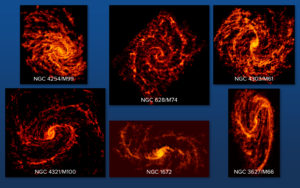
PHANGS-ALMA Survey Sample Galaxies
Six ALMA-imaged galaxies out of a collection of the 74. The images were taken as part of the PHANGS-ALMA survey to study the properties of star-forming clouds in disk galaxies.
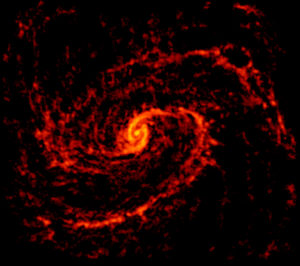
PHANGS-ALMA Radio Image of NGC 4321
ALMA image of galaxy NGC 4321, also known as Messier 100, an intermediate spiral galaxy located about 55 million light-years from Earth in the constellation Coma Berenices. It is imaged as part of the PHANGS-ALMA survey to study the properties of star-forming clouds in disk galaxies.
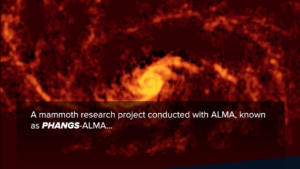
PHANGS-ALMA
ALMA is revealing new insights into the relationship between star-forming clouds and their host galaxies.





